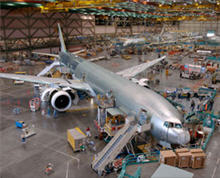Business
Boeing CTO Vaho Rebassoo: Dealing with complexity
At the CIO Impacts Forum in Los Angeles last month I spoke with Vaho Rebassoo, CTO of computing and network operations at Boeing. He talks about new innovation strategies and his vision for re-tooling the factory floor, which is a massive 472,000,000 cubic feet, with mobile technology.


Rebassoo, who has been at Boeing since 1984, is responsible for planning, design and implementation of IT infrastructure enterprise-wide. During the video interview I asked Rebassoo about the difficulty in modernizing Boeing's IT infrastructure, such as virtualizing servers and storage. Rebassoo explained:
"It's really the complexity of our company, our organization. When you stop to think about it, the organization reflects the complexity of the product. We build very complex products: space stations or airplanes. The people who build the tail section of the airplane have to communicate with the people who build the nose, because the people in the nose telling the tail what to do when you're flying it. So everybody has to interact with everybody else. That causes a complexity that was a major undertaking and needed some really high-level, executive support."
"If you were to draw a picture of how they interact with each other, it would be a spider web of incredible density. It’s hard to do any planning and moving into new technology or new capability when anything that you stick into that spider web has all of these different ramifications, and interactions with all these other applications that then have to change. We need to migrate toward a model that has less applications and the applications with more structure to them and better-defined interfaces, so that change can come more readily."Watch the video